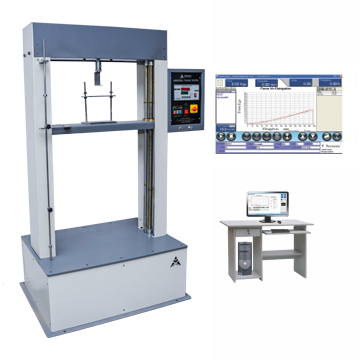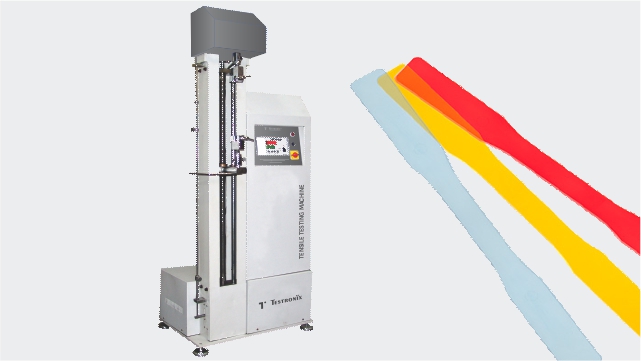Hey there!! Did you ever feel confused by the words "tensile strength" and "break strength"? You’re not the only one confused. Well, know that you're in good company now. They are the common words used in the engineering, manufacturing, and quality control banter, but have you ever stopped to consider their meanings and how, precisely, one differs from the other? The mystery will be unraveled right here!
However, before jumping into definitions and explanations, let's look at a common problem across many industries, how to be sure that the materials used in building and construction, automotive, aerospace, or consumer products will stand up to the forces they are likely to encounter in service. All it could take is one crack, break, or even a slight stretch, leading to disaster. Say hello to the Universal Testing Machine, your friend, in the world of material testing, designed to give you a precise, reliable source of data on the strength of your materials.
So let's break it down, and by the end, you'll know exactly, what's the difference between tensile strength and break strength, and what is your one tool for measuring these values.
What is Tensile Strength?
First, let's get an easy thing out of the way—tensile strength. You are there pulling on a piece of some material, let it be a rubber material. You keep pulling, an increasing force and the material starts stretching. Tensile strength is the greatest amount of tensile (pulling) stress a material can take before it starts failing or stretching too much and generally deforms permanently. There will be this point where it just won't stretch any further without thinning out or changing shape.
In more technical terms, tensile strength is measured in units like megapascals (MPa). It's the stress at the point when the material's cross-section is reduced, but before it actually breaks. So, it indicates how much load a material can tolerate, before it starts to permanently deform.
But What About Break Strength?
The last thing is break strength. This is the grand finale, sort of like the moment when a material cannot withstand it any longer, and enough of that leads to snapping, breaking, or fracturing. If tensile strength shows how much strength a material can bear before it starts to deform, the break strength is the maximum that it was able to be pulled on.
Simply put, break strength is the point of “no return”. When a material reaches its break strength, the material has failed, and you are standing there with two or more pieces whereas you were supposed to have one. It's much like when you stretch a rubber band to the breaking point, and the material fails. That is break strength.
Tensile Strength vs. Break Strength: Key Differences
Alright, so we've got tensile strength and break strength. They sound similar, but they're really measuring different points in the life of a material under stress. Here is how they differ.
STAGE OF FAILURE
Tensile Strength: This is all about the pulling ability of the material, to be pulled apart up to the point where it starts deforming permanently but has not broken yet.
Break Strength: The maximum force that a material can endure under a pull, before breaking into pieces.
FOCUS OF MEASUREMENT
Tensile Strength: Focus on the deformation resistance strength of the material.
Break Strength: It focuses on the material’s resistance ability, to completely break down.
APPLICATION
Tensile Strength: Important when it's necessary to know how much a material can stretch before it changes shape. In fact, this is critical, for example, in applications whereby something has to be designed to resist pulling forces: cables, wires, or other structural components.
Break Strength: Important if you need to know the bottom line of a maximum force just before breakdown. Think along the lines of bridge cables, lifting equipment, and safety harnesses.
Why do you need both?
And the obviously arising question is, why do we need to know both tensile and break strength? Isn't one enough? Well, not really. Knowing about both of them will provide you with a more complete picture of the material behavior under stress.
For example, one may have to know the tensile strength of steel in order to know how much it stretches under load in the case that it might play a critical role in designing a skyscraper or bridge. However, just as important is break strength, especially when safety is involved—where you need to know at what point the steel will break.
Now the question arises, what can be your Go-To tool for checking both strengths?
That is where the Universal Testing Machine steps in—one versatile, core piece of instrument utilized in any quality control or material testing lab.

INFORMATION STATION!
What kinds of materials can be tested for tensile and break strength?
Metals, plastics, composites, textiles, and even some ceramics are some kind of materials that can be tested In the material testing industry, UTM is recognized as one of the most versatile machines, working for a wide range of material types.
Is break strength the most important factor in material selection?
Break strength is not the only factor, however; it is important. It depends on the application of the material, how much importance needs to be given to tensile strength. It is simply a matter of finding a balance of the right characteristics to ensure safety and performance.
Is it possible for something to have high tensile strength but low break strength?
Yes. it is possible for the materials to have high tensile strength but low break strength.
WISH TO KNOW MORE? JOIN US AT A FREE CONSULTATION CALL.
Contact Information:
Phone: +91 9313 140 140
Email: info@testronixinstruments.com
Website: Testronixinstruments.com





